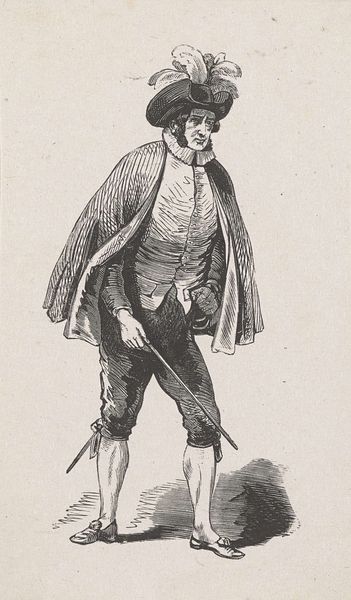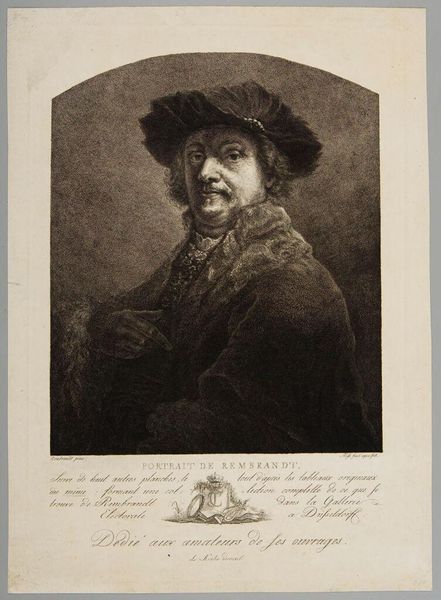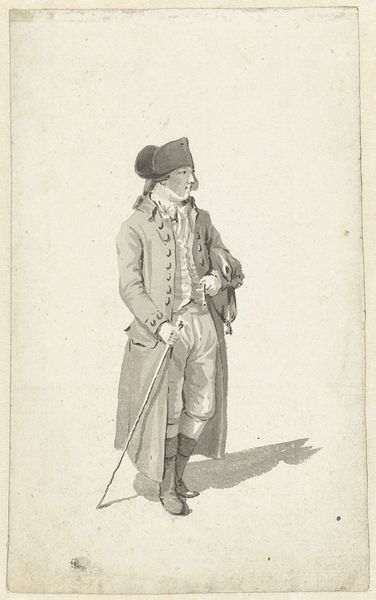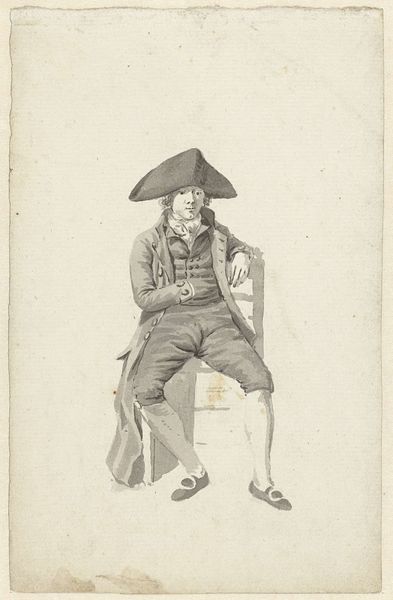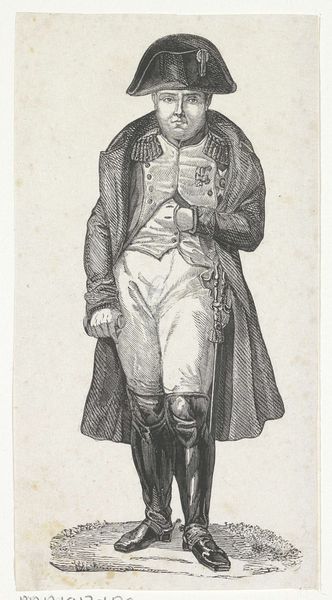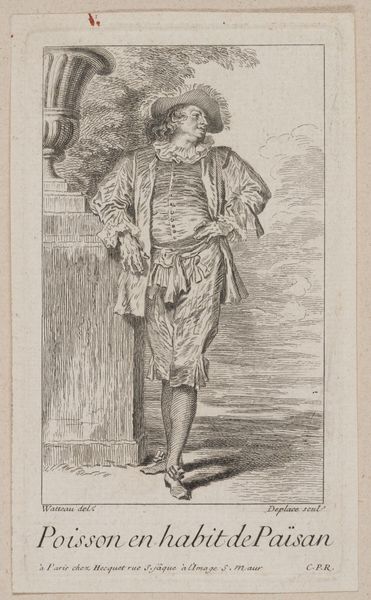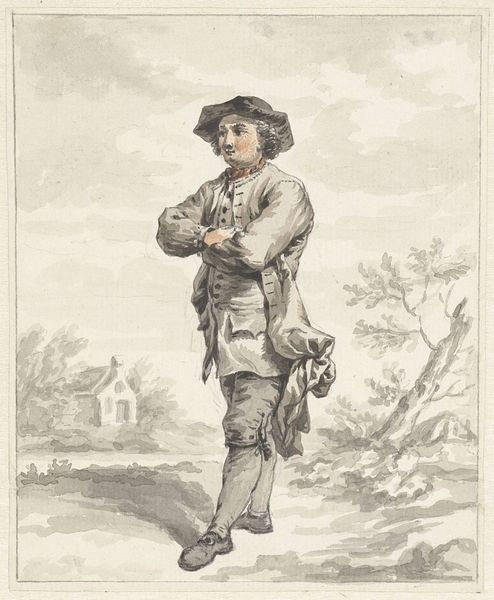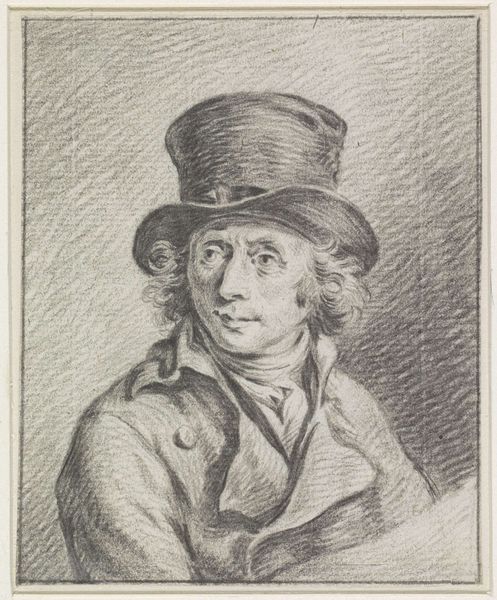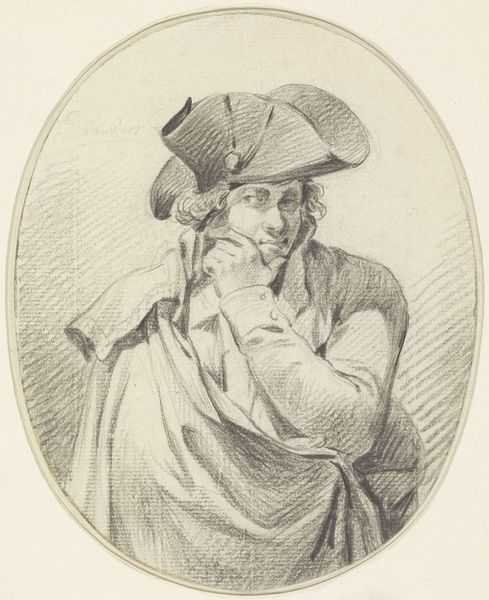
Portret van de man die hoefsmid was tijdens de opstand in Vendée 1805
0:00
0:00
engraving
#
portrait
#
neoclacissism
#
history-painting
#
engraving
Dimensions: height 173 mm, width 109 mm
Copyright: Rijks Museum: Open Domain
Editor: Here we have Ludwig Gottlieb Portman's "Portret van de man die hoefsmid was tijdens de opstand in Vendée", an engraving from 1805. The man's direct gaze is quite compelling. What strikes me is the ordinary portrayal of someone involved in a major historical event. What do you see in this piece, considering the context of the Vendée uprising? Curator: I see a potent intersection of class, revolution, and representation. The French Revolution was meant to uplift the common person, but the Vendée uprising reveals deep divisions. This portrait complicates the narrative of a unified revolution, as it presents a man who was both a common worker—a blacksmith—and a rebel. Portman's decision to portray him with such directness forces us to consider the individual stories often lost within broader historical movements. Editor: So it’s about questioning the dominant narrative? How does his identity as a blacksmith during the uprising change our interpretation? Curator: Absolutely. Blacksmiths, like other artisans, held a particular place in the social order. They weren’t nobles, but they also weren’t the poorest peasants. The Vendée uprising was fueled by a complex mix of factors, including resentment towards the centralizing power of Paris, religious fervor, and economic grievances. This blacksmith's participation underscores the multifaceted nature of resistance and the ways in which identity informed political action. How does his attire, in particular his hat, speak to this identity and resistance? Editor: Now that you mention it, his hat almost seems like a symbol of defiance or at least some form of social statement, not what you would expect from someone of the working class. Curator: Precisely! His hat signifies a localized identity, pushing against the fashion dictates of Paris and the Republic, thereby reclaiming identity. It really causes one to reflect upon resistance and identity. Editor: I see that now! I was focused on the face and forgot how even clothing choices can make a statement. It offers a different entry point into the complexities of revolution and representation. Curator: Indeed. Analyzing this portrait allows us to appreciate how seemingly simple artistic choices—the direct gaze, the inclusion of his tools, the detailed engraving of his clothes – all contribute to a richer understanding of this pivotal historical moment.
Comments
No comments
Be the first to comment and join the conversation on the ultimate creative platform.
